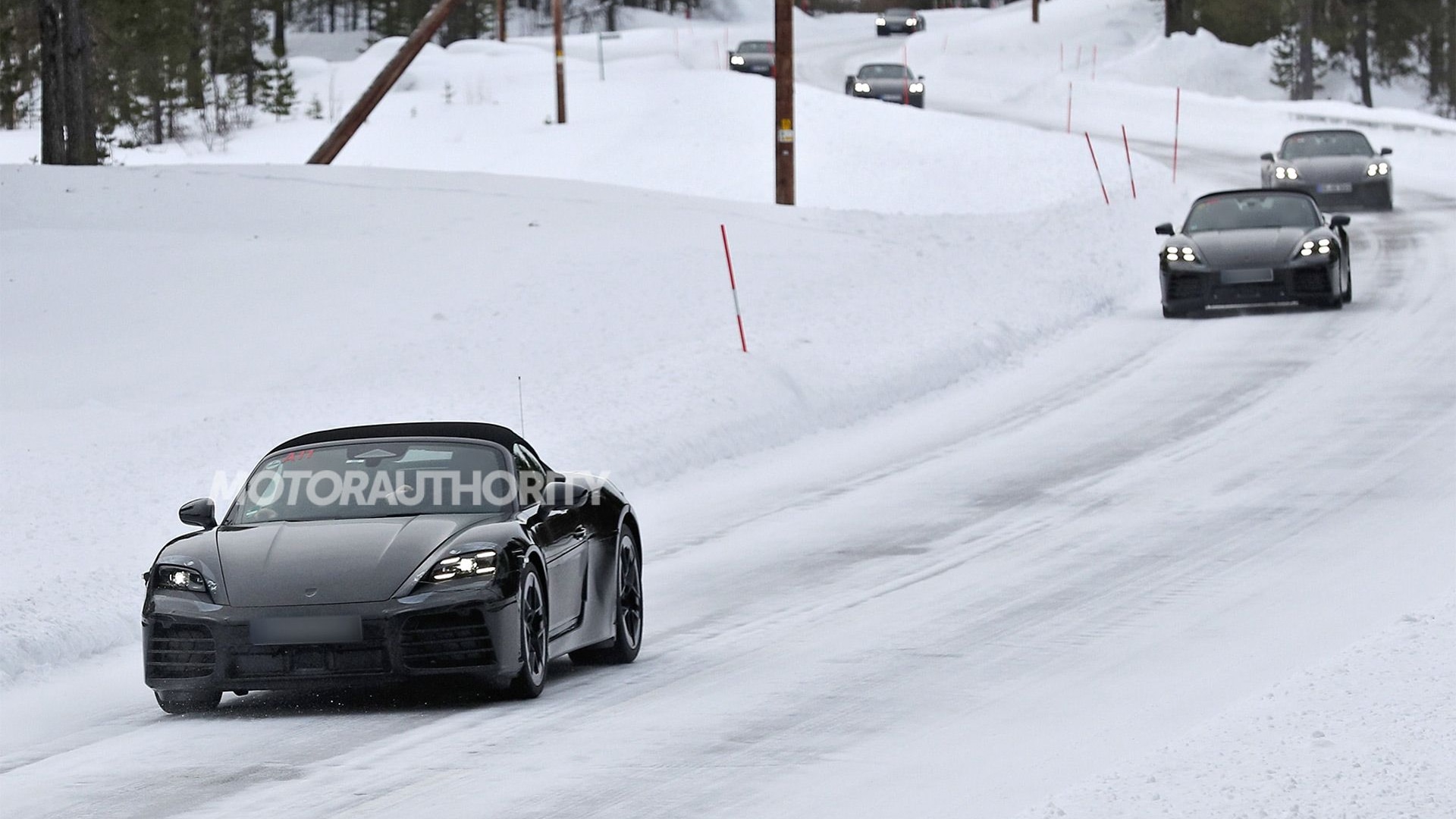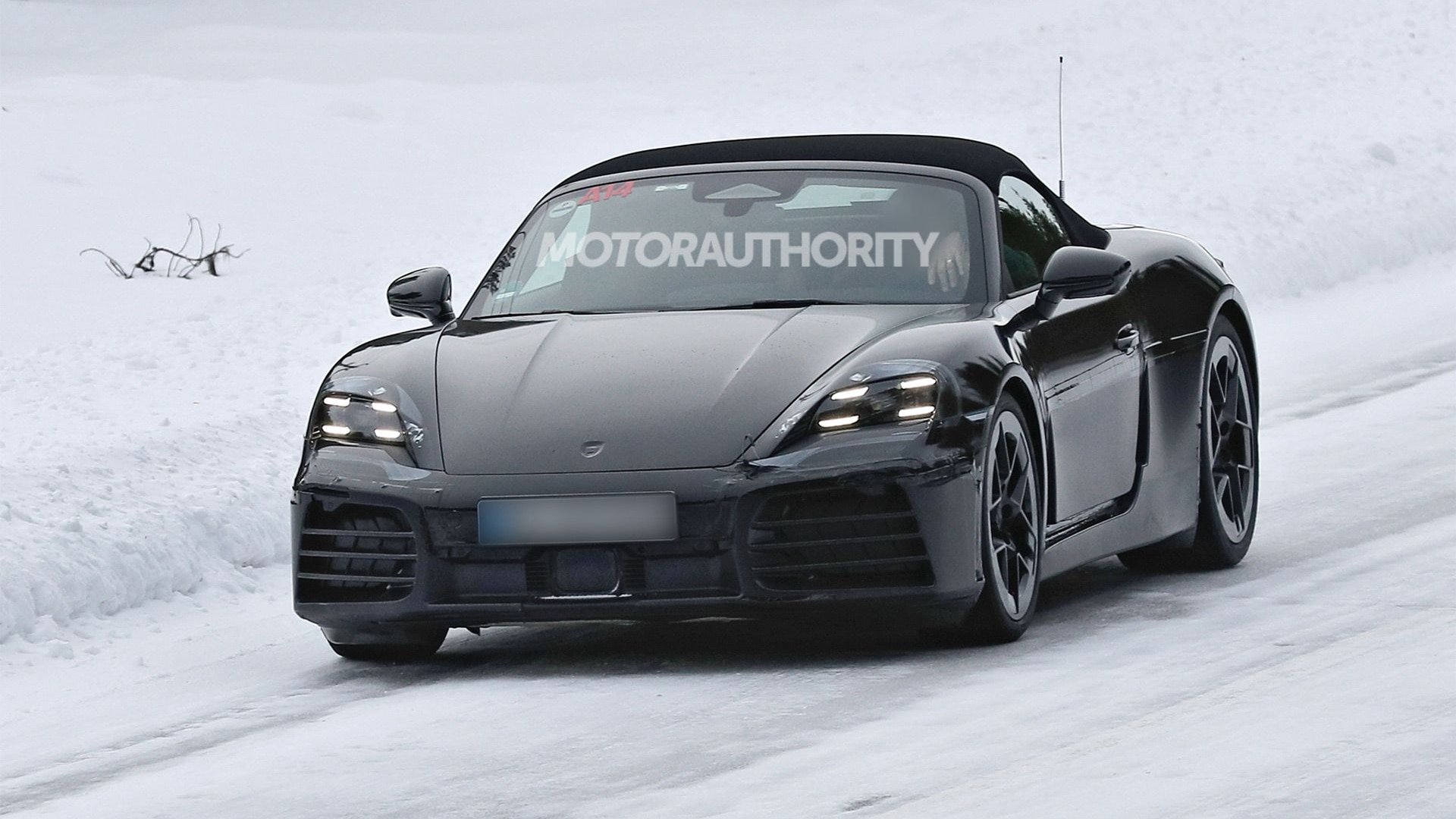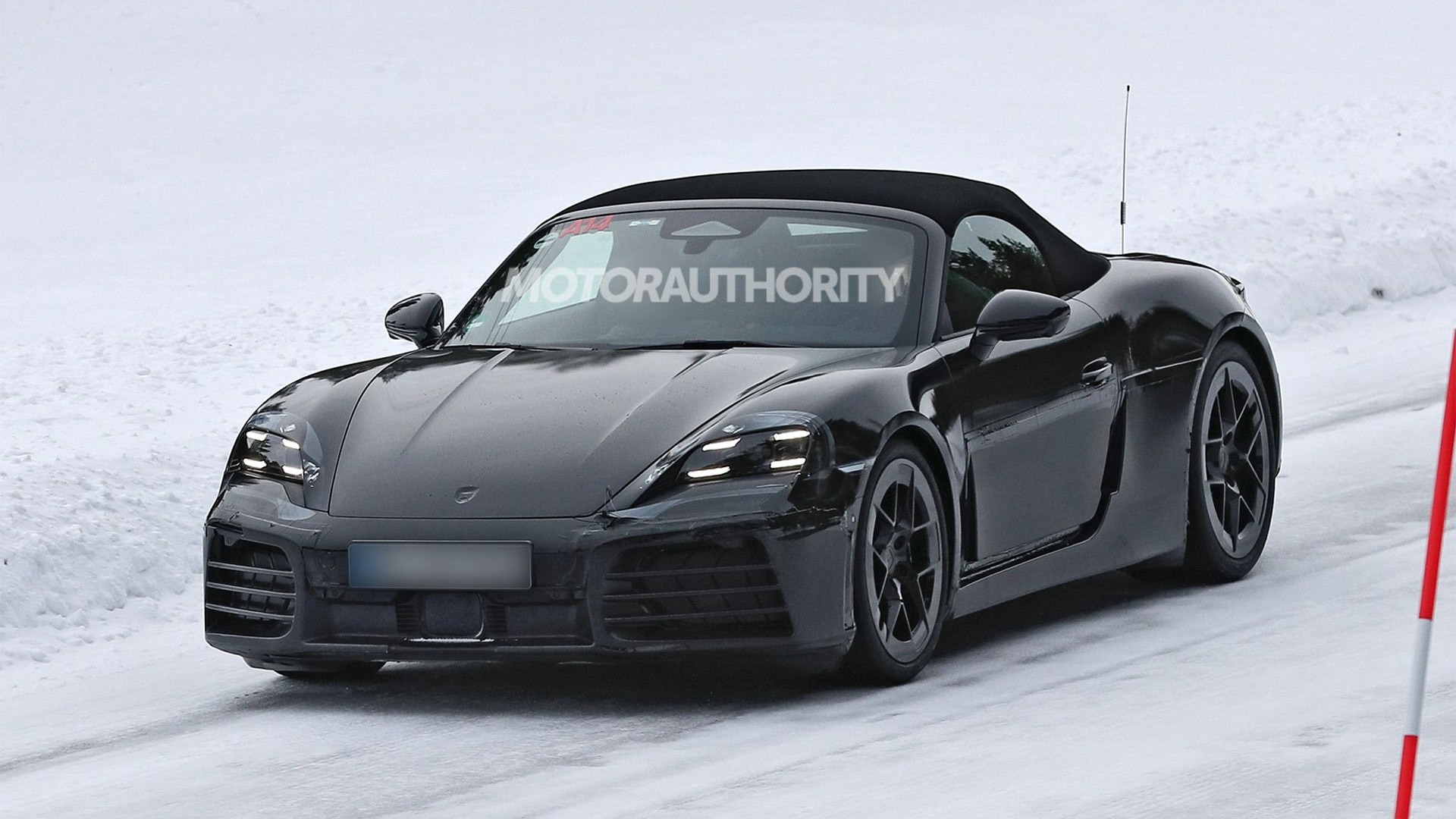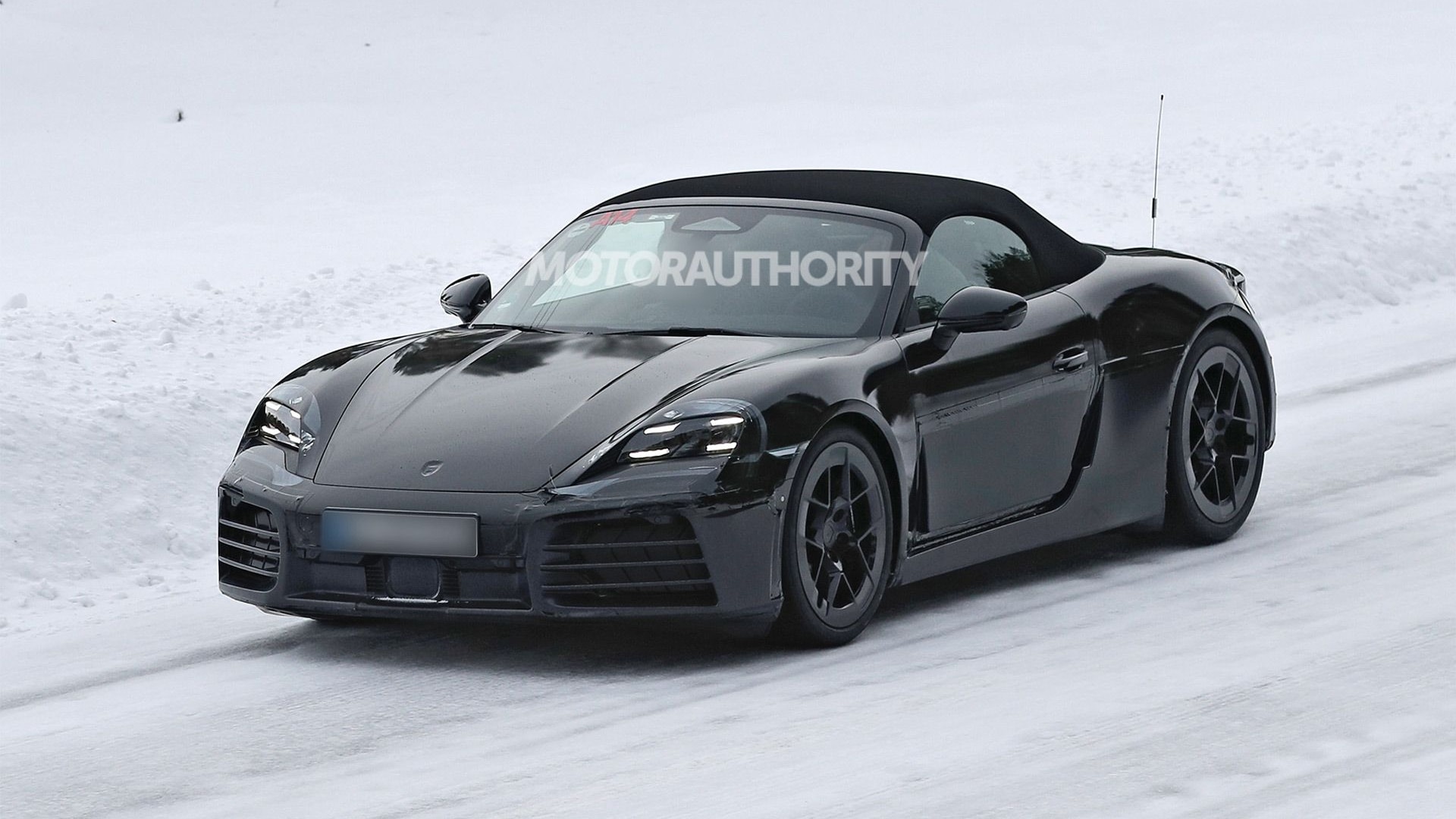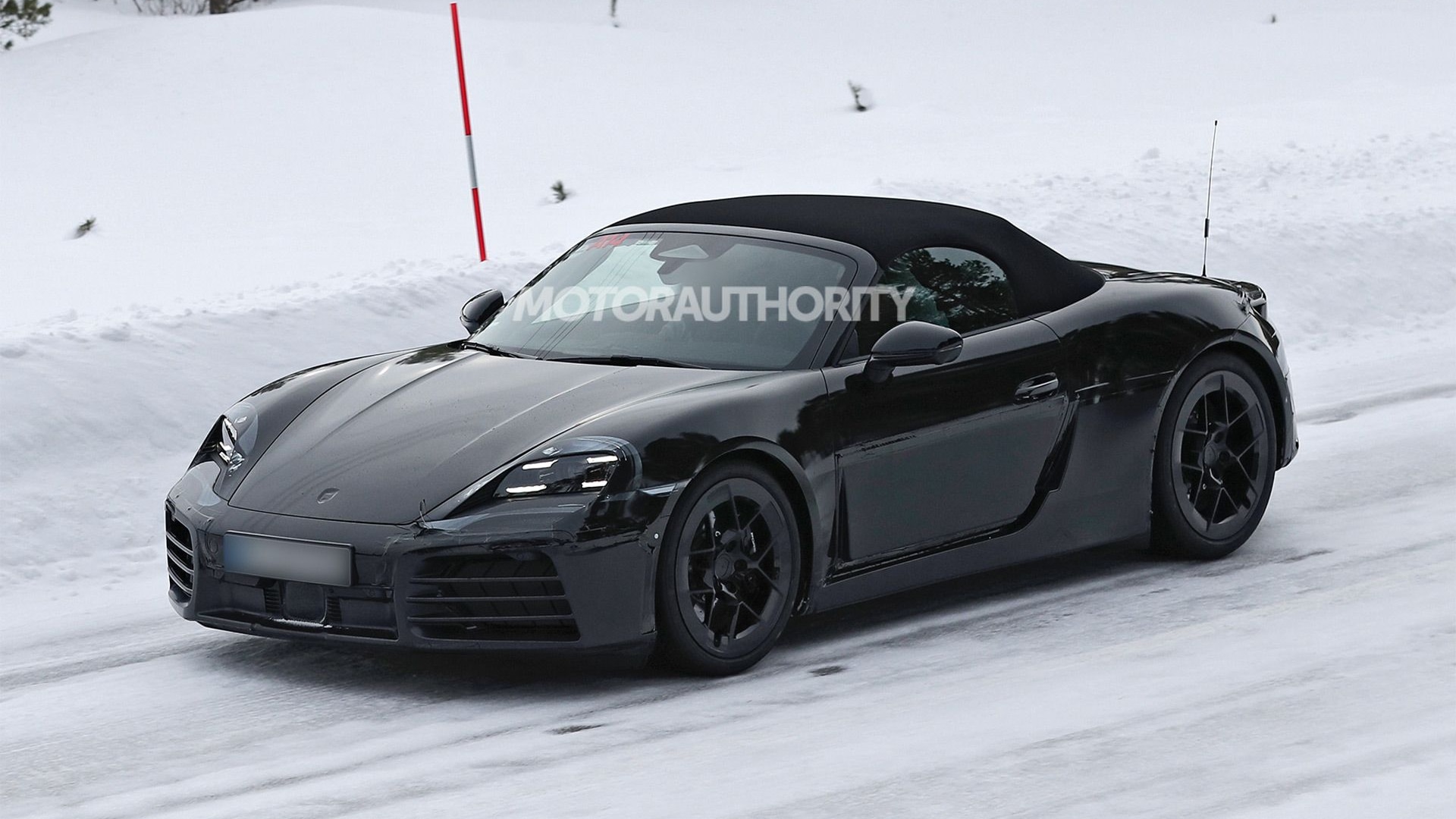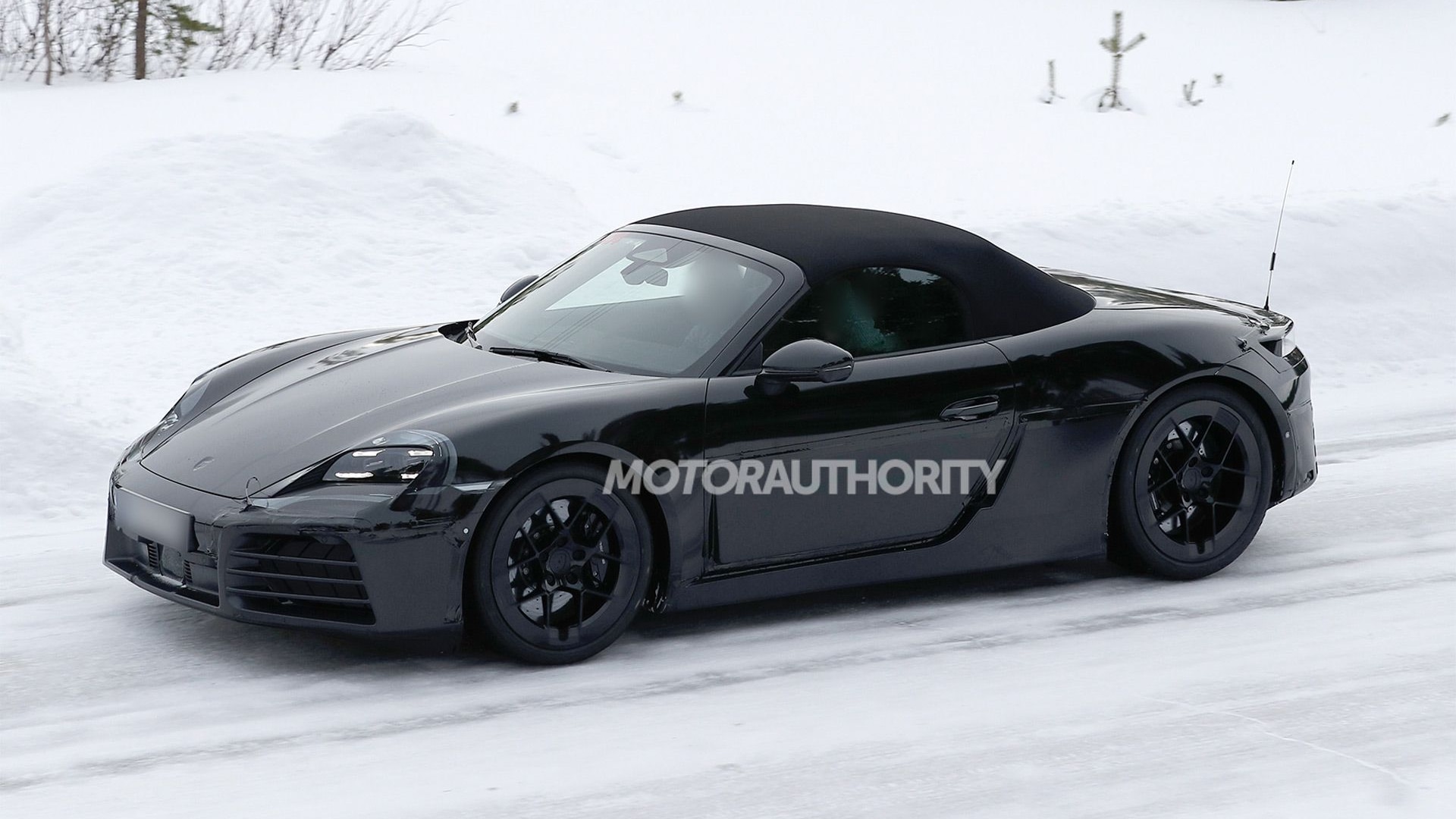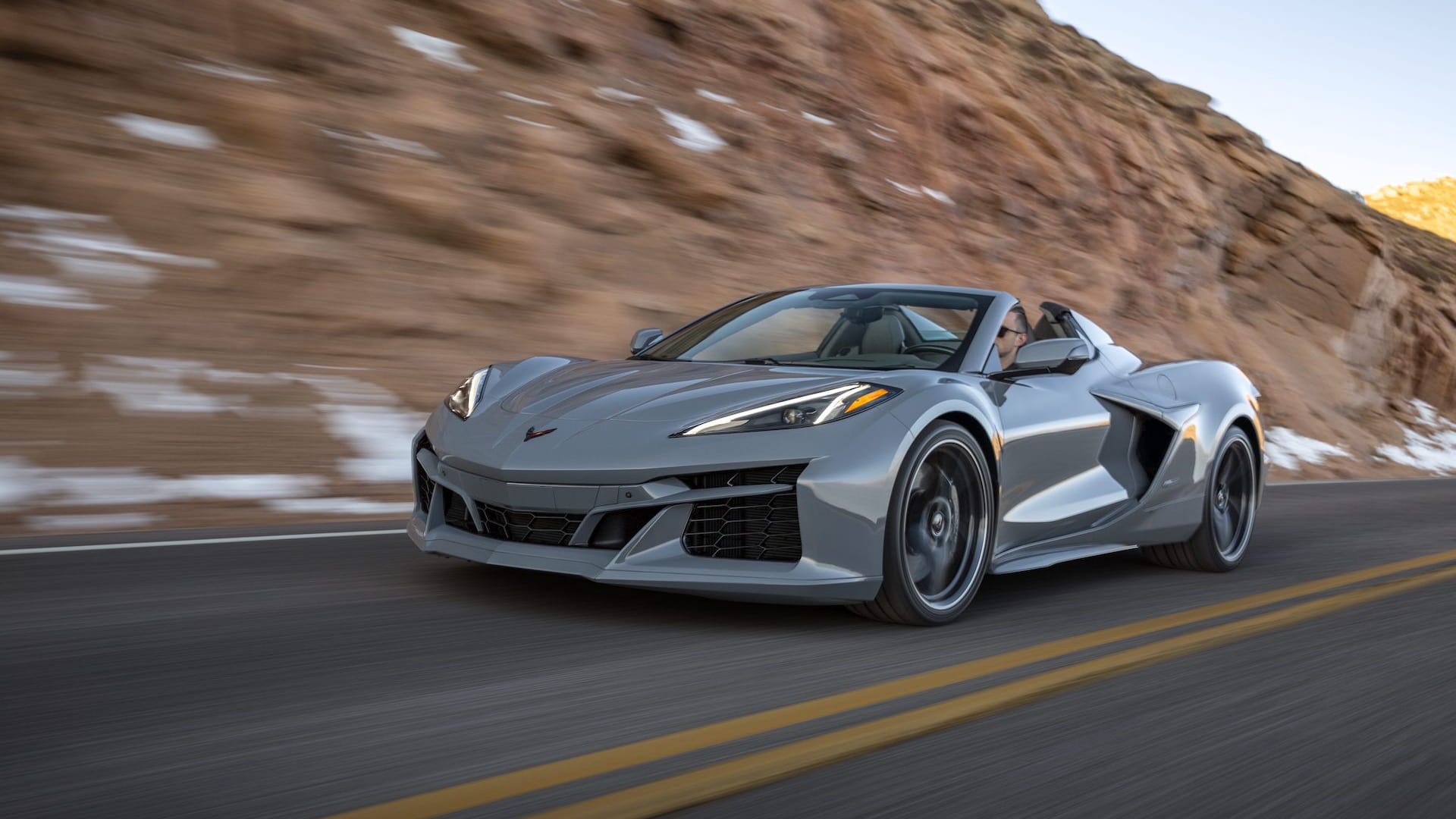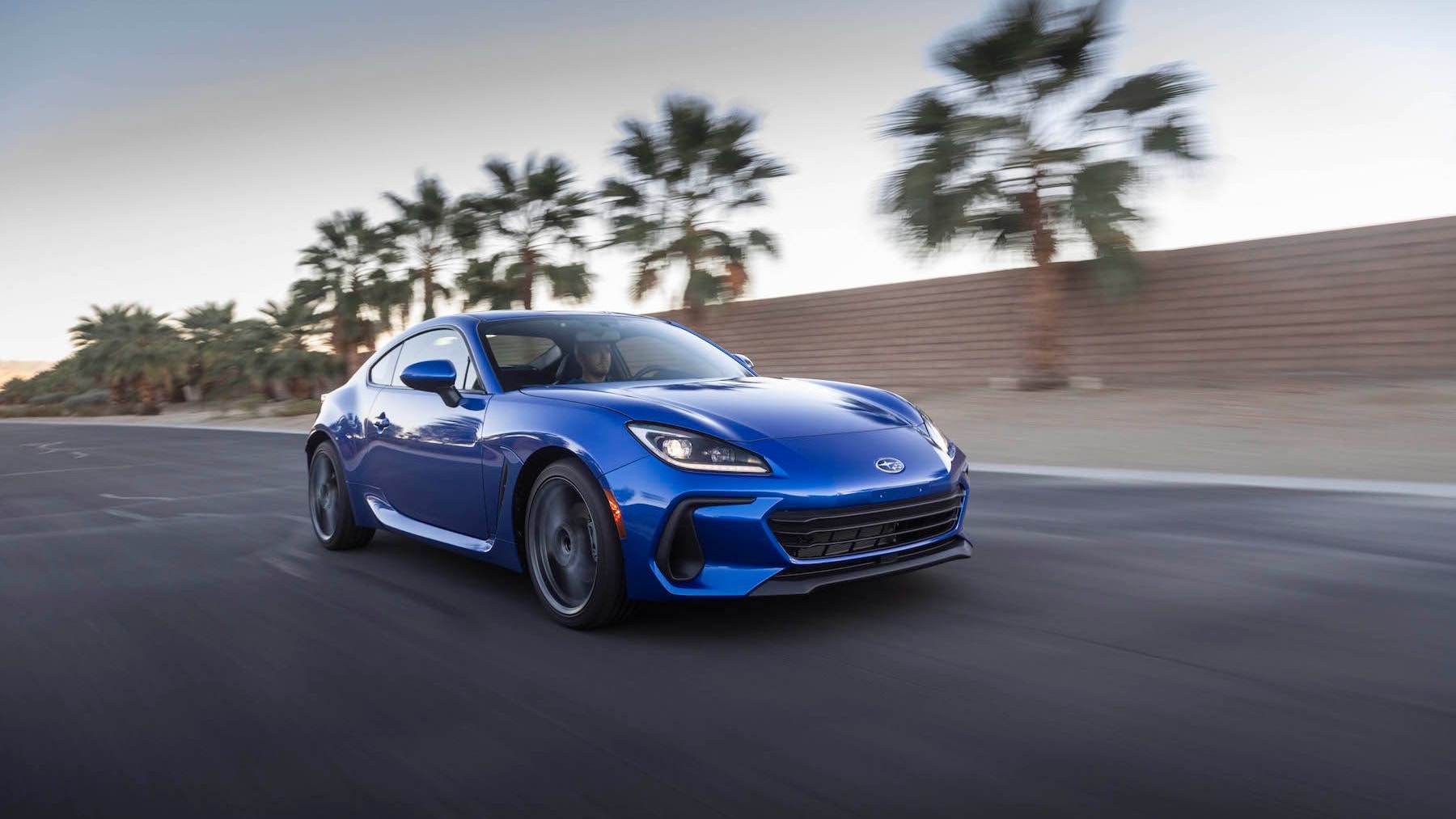Prototypes for the first electric sports car from Porsche have been spotted testing again, this time close to the Arctic Circle in northern Sweden.
The car is a redesigned 718 Boxster convertible, plans for which were confirmed in 2022 by Porsche CEO Oliver Blume for launch around 2025. A market arrival in the U.S. should coincide with the 2026 model year. An electric 718 Cayman coupe should also be in the pipeline.
The latest prototypes have shed a lot of the camouflage gear used on earlier cars, with details such as active shutters in the front fascia and the light strip forming the taillights clearly visible. The exhaust vent on some of the prototypes is to fool onlookers, and it appears an active rear wing might sit along the leading edge of the rear deck. The sound from the car in the video from Car Spy Media includes the distinct whir of an electric powertrain.
While the proportions appear similar to those of the current 718, the car looks wider overall and lower at the front. The headlights are also similar to what's found on the electric 2024 Macan unveiled in January and the updated 2025 Taycan unveiled just last month. The design of the car was previewed by the Porsche Mission R concept that was unveiled during the 2021 Munich auto show and also signaled Porsche's intention to develop an electric car for racing.
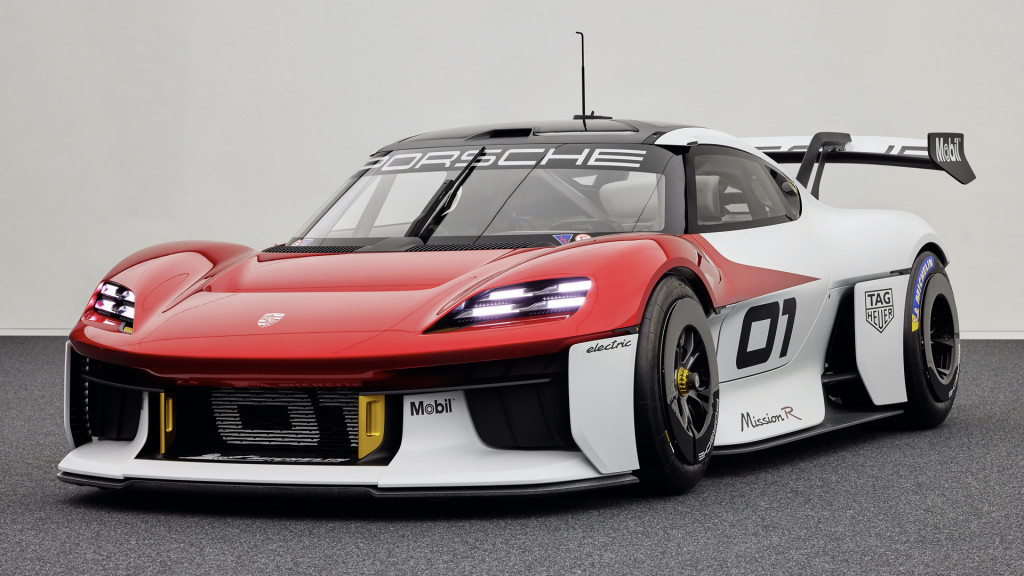
Porsche Mission R concept
The electric 718 is expected to offer the choice of rear- or all-wheel drive. The Mission R concept has a dual-motor all-wheel-drive system delivering 670 hp in a race mode and a temporary 1,073 hp in a mode designed for brief qualifying runs. The concept also features a single-speed transmission that, depending on the gear ratio fitted, allows for a top speed of more than 186 mph. Porsche's 718 Cayman GT4 ePerformance race car prototype based on the Mission R has two single-speed transmissions and is capable of top speeds that match current race cars.
Even at that lower limit of performance, the electric 718 would step on the toes of the 911, especially if Porsche achieves anything close to a rumored 3,650-pound maximum curb weight. To differentiate the two cars, the 911 will retain a gas engine for as long as regulations allow. It's too early to talk range, but the Mission R concept had an 80-kwh battery estimated to deliver around 250 miles of range.
A dedicated EV platform is expected to underpin the electric 718. Likely to be the same one in the Mission R, the platform would thus house the batteries in a T-shape section filling the center tunnel and the area behind the seats. Such a layout enables designers to keep the height of the car low while delivering weight distribution similar to a mid-engine car. Maserati will do the same for the upcoming electric version of the MC20 supercar.
The switch to an EV platform means Porsche won't offer a gas-powered next-generation 718. However, Porsche is expected to continue offering the current 718 alongside the new electric 718 for a period, perhaps with updates. The gas-powered Macan will also be sold alongside the new electric Macan for an undisclosed amount of time. Porsche may also do the same with the current Cayenne after an electric Cayenne is launched around 2026.
The accelerated growth in demand for EVs in the premium sector has caught many automakers by surprise, including Porsche. Only recently the automaker predicted that half its lineup would be electrified (hybrids and EVs) by 2025, but now it's openly stating that half of the lineup will likely be made up of fully electric cars by that date. Farther out, Porsche predicts that only the 911 will have an internal-combustion engine by the time 2030 rolls around.
Porsche rolled out an electric Boxster prototype as early as 2011. Called the Boxster E, the prototype was developed purely for research purposes and came with a 29-kwh battery and a single electric motor good for 240 hp.
